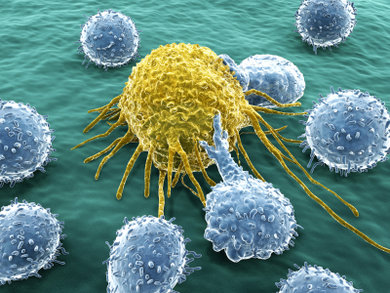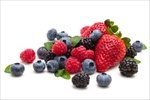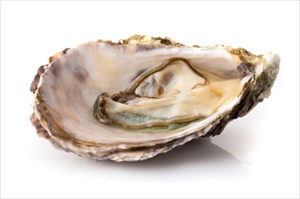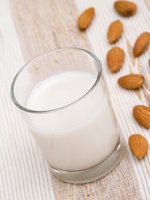Six Steps to a Healthy Balanced Diet
A healthy balanced diet is easier to achieve than you’d think, judging by the dizzying number of competing diets and diet plans out there, along with the cyber-sea of apparent contradictory food and nutrition advice from the experts and not-so-experts?
In a nutshell …
… a balanced healthy diet is one that will meet all your nutritional needs. So what are your nutritional needs?
|
Cancer Fighting |
Cancer Nutrition |
Breast Cancer |
Lung Cancer |
Inflammation |
Antioxidants |
|
Vitamin C |
Zinc |
Calcium |
Vitamin D |
Magnesium |
Constipation |
The biologic basics of a healthy diet are straightforward. You need protein (8 essential amino acids you must get from your diet -9 when you're a baby)to build tissue, function and grow; carbohydrates (a fancy word for sugar and the fuel needed for body and brain); fatty acids (that’s a fancy word for “fat”) with two types Omega 3 and Omega 6’s being essential for growth, energy and synthesizing hormones and other substances; vitamins (around 13 or so); minerals (approximately 21 are essential though new research suggests others are necessary too); digestive enzymes and friendly digestive bacteria to break down food and let its nutrients be absorbed; fiber; and ..., not to be forgotten, air, water and light.
When any of these aren’t in the mix or in inadequate amounts –disease or dysfunction can follow. If severe or sustained, the deficiency might mean game over, if you get what I mean?
You can see the importance of a healthy balanced diet.
Sometimes, the problem is an overabundance of nutrients, as opposed to a deficiency. Some minerals or vitamins are toxic in excess. Sometimes it’s a matter of quality. Not all fats and carbs are the same. Too much of the wrong kind can be harmful; whereas the same amount of the right carb or fat could be a boon for your health.
The bottom line is poor nutrition can play havoc with your health; a balanced healthy diet can save it.
If the above sounds like a chemistry class, don’t worry. There's more later about the fine points of a healthy balanced diet. Now - the basics.
Six Tips to achieve a Healthy Balanced Diet
The following tips for a Healthy Balanced Diet are the executive summary – the down and dirty for a balanced healthy diet.
Later, there's more detailed information about a healthy balanced diet,...if wanted.
For now, if you follow the below prescriptions for nutritious eating, you’ll be on the path to a healthy balanced diet, with corresponding improved vitality, whatever your age.
|
That's the nitty gritty for achieving a healthy balanced diet or healthy diet plan....Interested in learning more about the above Six Tips a Healthy Balanced Diet? Keep reading ...
1. Whole grains are part of a healthy balanced diet. Eat food made with whole grains like whole wheat bread, quinoa, millet, whole corn meal and brown rice. Skip or reduce processed grains including foods made with white flour, white rice, etc.
Whole or unprocessed grains provide an array of minerals and vitamins that are eliminated in the refining process along with health promoting fiber. As well whole grains have a lower glycemic index than processed grains and this is important for maintaining blood sugar levels and a healthy weight.
While many white or processed flours are “enriched” at the end stage of milling, only a smattering of the removed nutrients is replaced – not all. For example, chromium (helpful for regulating blood sugar levels) is removed to make white flour and not replaced in the enrichment process; the nutrient rich wheat germ is also discarded.
| Friendly Fiber Whole grains, provide fiber that promotes healthy digestion and evens blood sugar levels, as well as gives a sense of fullness without additional calories making fiber key in a weight loss or maintenance program. Fiber is minimal in most refined grains. |
The removal of beneficial nutrients and fiber from processed grains does not bode well for a healthy balanced diet.
Studies show that consumption of whole grains may reduce risk of stroke (up to 30%); type 2 diabetes (between 21 and 30%); heart disease (up to 28%). Research also suggests benefits of whole grains for inflammatory conditions including asthma, atherosclerosis and gum disease as well as high blood pressure.
2. Load up on a wide variety of differently colored vegetables and fruits for a healthy balanced diet. Think of your plate as an artist’s palette and use colors freely including bright orange, red and yellow fruits and vegetables as well as the dark leafy greens.
The vivid vegetable and fruit colors are a sign of health-promoting phytochemicals. For this reason, make fruits and vegetables a significant part of your diet.
| Healthy Balanced Diet Essentials - Raw fruits and veg daily. Heat can destroy nutrients, including up to 100% of enzymes, vitamins and other nutrients in fruits and veg, depending on the temperature and length of cooking. Light steaming (use a metal or bamboo steamer to prevent vegetables sitting in water) and microwaving, until vegetables are al dente are preferable to boiling lifeless. A handheld blender can help purée lightly cooked or raw vegetables or fruits without cooking. |
Make sure you include regularly fruits with high ORAC values, which have a high anti-oxidant potential and are super addition to a healthy balanced diet. ORAC stands for oxygen radical absorbance capacity – a mouthful. High ORAC value foods include most berries, plums, apples and melons etc. With what we know to date about the effect of antioxidants to combat oxidation, these high ORAC foods are considered antiaging.
The mantra for fruits and vegetables is variety. A range of fruits and vegetables provide different nutrients, including protective anti-oxidants, phytochemicals and bioflavanoids, than relying on the same old suspects for your nutritional needs.Studies show that those who eat the highest numbers of vegetables and fruits including a wide variety of same, have a lower rates and risk of disease than those who eat the same limited repertoire.
| Cruciferous Veggies - Best Buddies of a Healthy Balanced Diet Regularly eat vegetables from the cruciferous family (including cabbage, kale, arugula and broccoli) to promote digestive health. There is a link between eating cruciferous vegetables regularly and lower incidence of certain cancers and conditions of the digestive tract. |
3. Aim for high quality protein, not just quantity protein as part of a healthy balanced diet. - Include plant proteins like grains and legumes in your diet and limit animal protein to lean cuts of meat and low-fat dairy.
You can’t live without proteins (also called amino acids), but meat or animal products don’t have to be your sole source for these essential nutrients.
| The Stars of A Healthy Balanced Diet Let legumes, whole grains or other plant foods play a starring role in your diet to ensure you’ll get the healthful nutrients plants provide, along with sufficient high quality protein and the additional fiber that animal protein, including eggs and dairy products, generally lacks. |
Few people eating a typical Western diet suffer from lack of protein, unless suffering a medical condition, an eating disorder or following an extreme or unorthodox diet plan. Many of us get far more protein than needed to maintain health (in a Western diet mainly from animal sources) but are deficient in other key nutrients that non-animal protein sources could supply. As the high number of lifestyle and primarily diet related diseases in the US and Europe suggests, over-nutrition isn’t necessarily balanced nutrition or optimal for a healthy balanced diet.
To remedy a reliance on excessive animal protein, make plants, whether from whole grains, legumes (beans and lentils) or vegetables, a major source of dietary protein. If desired, supplement with high quality but modest amounts of animal protein, whether in the form of lean meat, poultry or dairy.
| Supporting Actors in a Healthy Balanced Diet If you eat animal proteins, treat them as the bit players in your diet drama with first billing going to the plant proteins. The Mediterranean diet and some Asian diets follow this approach and are noted for their positive effects on health and disease prevention. |
When eating animal protein, opt for leaner meats like chicken or turkey or the less fatty cuts of beef, lamb or pork. Consume skim or low fat (1%) dairy products. This will substantially reduce the amount of saturated fat you consume.
If you can find and afford it, prefer organic
meat, eggs and dairy to conventionally-reared animals and their
byproducts. Toxins, including pesticides, antibiotic and hormone
residues, concentrate in the fat of animals at the top of the food
chain. Increasingly, non-organic dairy is available hormone-free; read
labels. Press here for more on the benefits of organic food and whether they are worth it.
4. Eat the right fats; avoid or minimize the wrong fats as part of a healthy balanced diet. You need fat, also called fatty acids, in your diet for proper physiological functioning of the brain (two thirds of which is fat), nerve pathways, as well as hormone production, among other body systems.
Follow these diet tips when choosing which fats to eat and which to avoid.
- (Emphasize health promoting fats and oils in your diet including the right ratio of Omega 3 and Omega 6 oils– Polyunsaturated fatty acids (or PUFA’s) include Omega 3 oils found in cold water ocean-going fish like salmon, tuna and mackerel as well as flax oil, pumpkin seeds and their oils; as well as Omega 6 rich fats found in sunflower seed, canola (rapeseed) and borage seed oils, among others.
While you absolutely need Omega 3 and 6 fats in your diet; you must maintain the right balance between the two – effectively a 1 to 2 ratio.
| Anti-inflammatory Oils Omega 3’s have an anti-inflammatory effect on the body, which is good for prevention and cure of many health conditions. Depending on its source or how it is processed, Omega 6 oils can be either inflammatory or anti-inflammatory. |
Many of us are deficient in Omega 3’s because these fats are easily destroyed by exposure to heat, oxygen and light, all common in food processing. The result is a surfeit of Omega 6’s in our diet and a deficiency of anti-inflammatory Omega 3’s.
Current agricultural practices to grain feed as opposed to grass feed livestock and dairy herds further accentuates the disparity between Omega 3 and Omega 6 intake. Omega 6 fats predominate in grain fed meat and dairy.
It follows, this deficiency in Omega 3‘s and profusion of possibly inflammatory Omega 6 fats can be bad news for inflammatory conditions like eczema, chronic pain, arthritis, arthrosclerosis, some cancers and arguably certain dementias and other mental conditions.
- Minimize saturated fats found in animal products as well as palm and coconut oils by choosing lean types and cuts of meat and poultry, and skim or 1% dairy products. High dietary levels of saturated fat are directly linked to high bad (LDL) cholesterol levels and cardiovascular disease as well as breast, prostate, ovarian and colorectal cancer.
- Avoid trans fats found in many margarines, commercial baked goods and fast foods. While some trans fats occur naturally in meat and dairy products, most in the typical Western diet are chemically altered polyunsaturated fats designed to stay solid at room temperature. This is unlike natural polyunsaturated fats that remain liquid at room temperature. These artificially altered trans fats are not as well metabolized by the human body as their precursor. The unfortunate result is that trans fats can hinder and even block certain physiological processes. Studies show that trans fats can increase one’s risk for heart disease by raising the bad (LDL) cholesterol and decreasing, unlike saturated fats, the protective good (HDL) cholesterol – a potentially lethal combo. Trans fats have also been linked to dementia, diabetes, infertility, depression, liver problems and other conditions.
For more about Omega 3s and healthy oils, click here.
5. Drink the right stuff; skip the wrong for a healthy balanced diet – Water rules!- Be judicious with caffeinated, sugared (whether natural fruit or refined sugars), high fat dairy and alcoholic beverages.
You may watch calories and the quality of your food. However what you drink often is the overlooked part of your diet, whereby you unwittingly can sabotage your weight reduction or health improvement efforts.
The average person needs to replace 2.4 liters of fluid daily, through food and drink. Athletes, or those who work outside in heat or suffer certain health conditions may need more. Drinking eight 8 oz of fluid per day is recommended, with the remaining fluid coming from food.
So what to drink? ... Water is ideal
If pure and unadulterated, it can detoxify. It is essential for most physiological functions and key to a healthy balanced diet.
Herbal teas are another good bet, provided you’re not spiking them with excess fatty dairy or sugar.
- Eliminate or minimize sweetened sodas or drinks because of the excessive sugar, which provides empty calories, upsets blood sugar and is potentially inflammatory. Soda, whether regular or diet, contains phosphates which can play havoc with calcium balance and bone maintenance.
- Easy on the Fruit Juice
The concentrated sugar (even the unsweetened 100% fruit kind) and dense calories on a regular basis can be troublesome for blood sugar maintenance, especially because the beneficial fiber that could slow the absorption of sugars in the body is absent.
| The Juice about Juice One 8 oz glass of orange juice contains between 3 and 4 oranges. That’s a whack of fructose (sugar) hitting your system in a couple of gulps. Instead, eat the whole fruit. You’ll get the same beneficial nutrients, needed fluid, as well as fiber, and far fewer calories than if you drink an 8 oz. glass. |
- Moderate your caffeine intake whether in the form of coffee, tea, chocolate or cola drinks etc. Caffeine can trigger the release of stress hormones that, over the long haul on a regular basis, can affect hormone balance including the functioning of your adrenal glands that, ultimately, may deplete energy. Obviously, this is not the best for a healthy balanced diet.
- Don’t O.D. on milk because too much dairy may be mucous as well as acid forming, which is not good for bone health.
There is some evidence that too much milk may be inflammatory in
certain situations. Many adults, including a large percentage of Asians,
lack an enzyme to digest milk, leading to stomach and digestive upset.
Stick with skim or low fat (1%) versions to eliminate excess saturated
fats. While dairy can be a good source of calcium, there are other foods
by which you can and many populations do consume to maintain healthy
bones and avoid osteoporosis. Press on Benefits of Calcium for alternate sources.
- Moderate your alcohol to one glass of red wine a day for women and two for men. According to research, while there may be some cardiac benefits to drinking red wine, due arguably to the antioxidant resveritrol found in the grape skins and possibly the relaxing effects of alcohol itself, moderation is key.
| Caution with Alcohol Alcohol, in excess, is toxic to many organs and body systems including the liver, brain, throat and stomach. It is also high in calories and concentrated sugars, so potentially unhealthful for maintaining blood sugar and insulin levels. |
The roller coaster effect of alcohol on blood sugar can be lessened by drinking your alcohol with a meal, where the other nutrients along with fiber may have a stabilizing effect.
| Sugar Everywhere Beware the many guises sugar can wear on a food label. Some common aliases include fructose, glucose, sucrose, glucose solids, diastatic malt,ethyl maltol, dextran, cane juice crystals, crystalline fructose, buttered syrup, blackstrap molasses, molasses, caramel, maltose, galactose, high fructose corn syrup (HFC), invert sugar, demerara, sugar, Barbados sugar, castor sugar, invert sugar, honey, fruit juice concentrate, treacle, syrup, sorghum syrup, evaporated cane juice, refiner's syrup, raw sugar, organic raw sugar, xylose, saccharose, confectioner's sugar,golden syrup, rice syrup, fruit juice, muscavado sugar, maltodextrin, maple syrup, date sugar, brown sugar, yellow sugar, agave nectar, or lactose. Because food manufacturers must list all ingredients by weight, they sometimes choose to list various types of sugar to disguise the fact that the product is laced with the sweet stuff. Thanks to Robert Lustig's Fat Chance for the above list. |
6.Avoid the Wrong Foods for All the Right Reasons – Eliminate Junk Foods; the Nutrient Thieves for a Healthy Balanced Diet.
- Limit processed foods, especially those high in sugar, fat, refined grains, artificial colors or preservatives; or listing ingredients you can’t pronounce or don’t understand. The last is a sign that the ingredient may not be something you want in your body and certainly not as part of your healthy balanced diet.
- Avoid trans fats because they have no nutritional value and studies show they can damage your health; minimize saturated fats and obtain them ideally from pesticide, antibiotic and hormone free sources such as organic meat or dairy.
- Pass on burned or heavily charred food as well as minimize meats preserved with nitrates
like sausages, luncheon meats, bacon and ham. The first is a source of
free radicals and both have been linked to the growth of digestive
cancers. Eat nitrate-free meat products. Press here to see how to grill meat safely and avoid carcinogens.
- Nix soda pop – both the sugared and artificially sweetened kinds. If it doesn’t overwhelm your system with unneeded sugar or artificial sweeteners or caffeine, soda pop provides phosphates that potentially leach calcium from your bones. It is theorized that the phosphates in dairy products are offset by the high calcium levels dairy delivers, something soda pop does not.
- Avoid excess sugar including foods with labels that spell sugar a myriad different ways. Sugar can be inflammatory and studies have linked excess to health conditions including cancer, Type II diabetes, heart disease, and ADHD.
The problem with junk food … It belongs in the junk yard not your body.
It’s a no-brainer that nutrient poor foods (aka Junk Food) should be avoided for the most part or eaten sparingly as part of a healthy balanced diet.
Press here to read about some unhealthy foods that may first sound healthy but aren't.
| Junk Food Is Not Neutral Even if you have met your daily requirements for a healthy balanced diet, nutrient-poor foods require, sometimes extensive nutrients to digest and detoxify from your system. It follows, junk food robs you of nutrients and energy that could be used for other body processes like immune function, blood sugar maintenance, hormone production and detoxification. |
The odd hot dog and coke at the ball park chockablock with nitrates, sugar and phosphates and likely worse are no big deal, especially if you’re in good health and mostly follow a healthy balanced diet. They become a consideration possibly as you age, if you are under emotional or physical stress, suffer from an illness or medical condition, and these nutrient-poor foods become a regular part of your diet.
Press here to read about cancer and nutrition and anti-inflammatory diets.
In Summary - Keep your balance for a healthy diet
We know so much more today about what constitutes a healthy balanced diet than we did before. The scientific research, while dizzying, points in the right direction toward common sense healthy eating.
Remember the above six simple tips for a healthy balanced diet ....
....and you’ll be on your way to improved health and vitality.
For additional information about a healthy balanced diet, see the below links....
|
Balanced Diet |
Calories |
Food Labels |
My Plate |
Organic |
Vitamins? |
|
Inflammation |
Antioxidants |
Low Glycemic |
Vitamin C |
Cancer |
Omega 3 |
Press here for more healthy diet tips.
Press here for more on foods that sound healthy but aren't.
Press here for more on the benefits of organic food and whether they're worth the money.
Press here for more about how to calculate calories.
Press here for more on the New Food Pyramid - My Plate and other food guides.
Press here for more on
Reading Food Labels.
Press here for more on Glycemic Index Food List.
Press here for more on Antioxidants and Orac Values.
Click here to read about Anti-inflammatory Supplements and Anti-inflammatory Diets along with a list of Inflammatory Foods.
Click here to read about the Benefits of Supplements and whether you need them.
Click here to readd about Digestive Enzymes.
Click here to read about Omega 3s and healthy fats.
Click here to read about the Benefits of Vitamin C.
Click here to read about the Benefits of Vitamin D.
Click here to read about Magnesium and Magnesium Foods.
Click here to read about Calcium.
Click here to read about Chromium.
Click here to read about Zinc and Zinc Foods.
Click to read about the benefits of organic food.
Click to read about a cancer prevention diet.
Click to read about a cancer and nutrition.
Click to read about a cancer fighting diet.
For delicious nutritious recipes to cook up, press on Healthy Food Recipes.
For timely news and commentary on diet and health, click Healthy Diet News Blog,
Click here to Return from Healthy Balanced Diet to Healthy-Diet-Healthy-You.com Home Page.
















